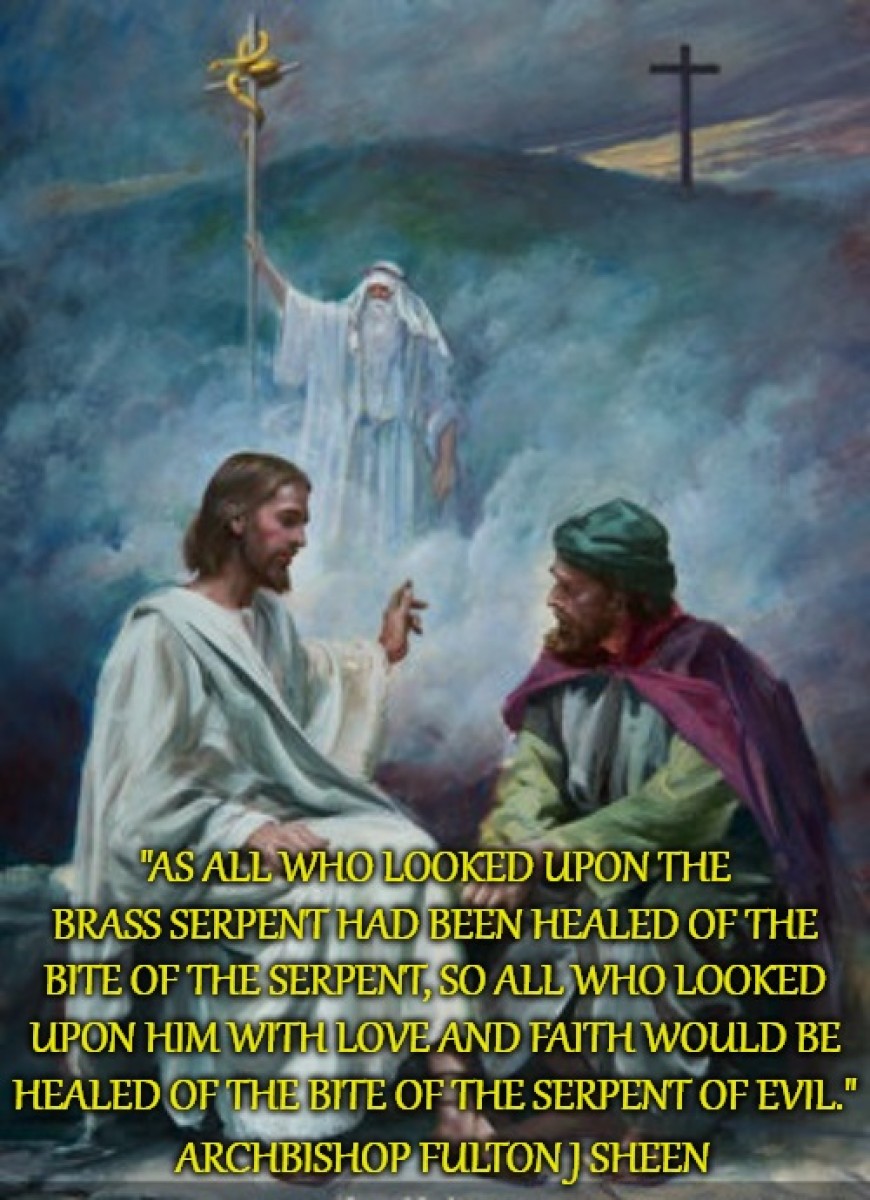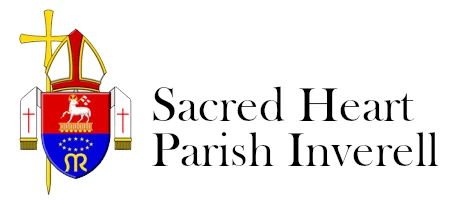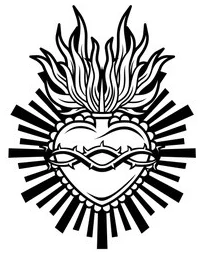Laetare Sunday / 4th Sunday of Lent (Year B) - 10 March
8th March 2024

“The Cross of Christ was mysteriously proclaimed in advance and foreshadowed from generations of old and no one was ever reconciled with God except by the power of the Cross.” – St Gregory Palamas
The fourth Sunday of Lent marks the halfway point of our preparation for Easter and is celebrated with rose vestments instead of the usual violet. Laetare means “to rejoice” in Latin, and the lighter vestments signify a brief celebration in expectation of Easter, even in the midst of Lent.
A reflection on today's Gospel reading by the Venerable Archbishop Fulton J Sheen:
"Our Lord never spoke of His Heavenly, or Risen Glory without bringing in the ignominy of the Cross. Our Lord lived both a heavenly life and an earthly life; a heavenly life as the Son of God, an earthly life as the Son of Man. While continuing to be one with His Father in Heaven, He gave Himself up for men on earth. To Nicodemus, He affirmed that the condition on which man’s salvation depended would be His own Passion and death. He made this clear by referring to the most famous foreshadowing of the Cross in the Old Testament.
"The Book of Numbers relates that when the people murmured rebelliously against God, they were punished with a plague of fiery serpents, so that many lost their lives. When they repented, Moses was told by God to make a brazen serpent and set it up for a sign, and all those bitten by the serpents who looked upon that sign would be healed. Our Blessed Lord was now declaring that He was to be lifted up, as the serpent had been lifted up. As the brass serpent had the appearance of a serpent and yet lacked its venom, so too, when He would be lifted up upon the bars of the Cross, He would have the appearance of a sinner and yet be without sin. As all who looked upon the brass serpent had been healed of the bite of the serpent, so all who looked upon Him with love and faith would be healed of the bite of the serpent of evil.
"It was not enough that the Son of God should come down from the heavens and appear as the Son of Man, for then He would have been only a great teacher and a great example, but not a Redeemer. It was more important for Him to fulfil the purpose of the coming, to redeem man from sin while in the likeness of human flesh. Teachers change men by their lives; Our Blessed Lord would change men by His death. The poison of hate, sensuality, and envy which is in the hearts of men could not be healed simply by wise exhortations and social reforms. The wages of sin is death, and therefore it was to be by death that sin would be atoned for. As in the ancient sacrifices the fire symbolically burned up the imputed sin along with the victim, so on the Cross the world’s sin would be put away in Christ’s sufferings, for He would be upright as a priest and prostrate as a victim.
"The two greatest banners that were ever unfurled were the uplifted serpent and the uplifted Saviour. And yet there was an infinite difference between them. The theatre of one was the desert, and the audience was a few thousand Israelites; the theatre of the other was the universe and the audience, the whole of mankind. From the one came a bodily healing, soon to be undone again by death; from the other flowed soul-healing, unto life everlasting. And yet one was the prefigurement of the other.
"But though He came to die, He insisted that it would be voluntary, and not because He would be too weak to defend Himself from His enemies. The only cause for His death would be love; as He told Nicodemus.
"On this night, when an old man came to see the Divine Master Who had startled the world with His miracles, Our Lord told the story of His life. It was a life that began not in Bethlehem, but existed from all eternity in the Godhead. He Who is the Son of God became the Son of Man because the Father sent Him on a mission of redeeming man through love."
(Life of Christ)
Praying during Lent - Lectio Divina §1
Lectio Divina is comprised of two Latin words, meaning “divine reading”. Lectio Divina is a method for praying with the Scriptures, that is, the Bible. It is an ancient form of Christian prayer that dates back to the early monastic communities such as those in Egypt founded by St Anthony (d. 351), though it has remained throughout the centuries in monastic prayer. The Benedictines, the Cistercians, the Carmelites, and the Carthusians all practise lectio divina. It helps the monks and the nuns in their daily encounter with Holy Scripture, as they prepare for Holy Mass as well as when they pray the Divine Office together in choir.
As one slowly and carefully reads the inspired Word of God contained in the Bible, it bears fruit in how we view the events of daily living and helps us to find the presence of God more readily in each day. The goal is not to rush through several chapters of Scripture. The reader, rather than trying to take in large sections of Scripture, adopts a reflective stance towards a short passage from the Bible; perhaps pausing on a single word or a phrase that resonates with the mind and the heart.
There are four steps in Lectio Divina. There is lectio (reading), meditatio (meditation), contemplatio (contemplation) and oratio (prayer). More on how to do it next Sunday.
Prayer for Christlikeness (St John Henry Newman)
Dear Jesus, help me to spread Your fragrance everywhere I go; Flood my soul with Your spirit and life; Penetrate and possess my whole being so completely that all my life may be only a radiance of yours; Shine through me and be so in me that everyone with whom I come into contact may feel Your presence within me. Let them look up and see no longer me—but only Jesus. Amen. 🙏💖💐


